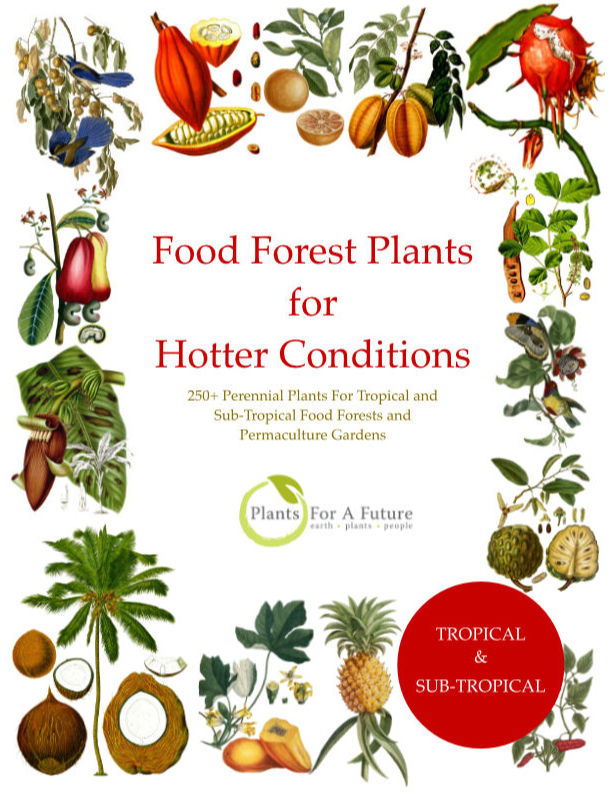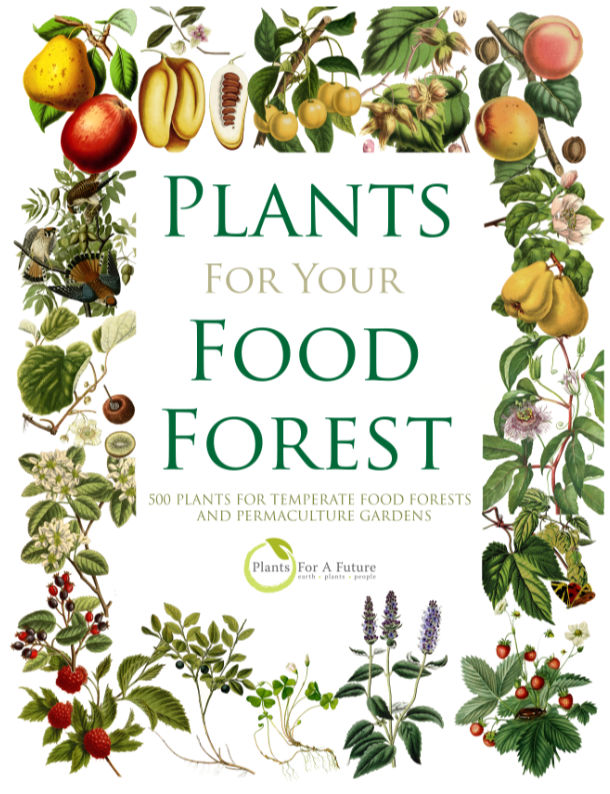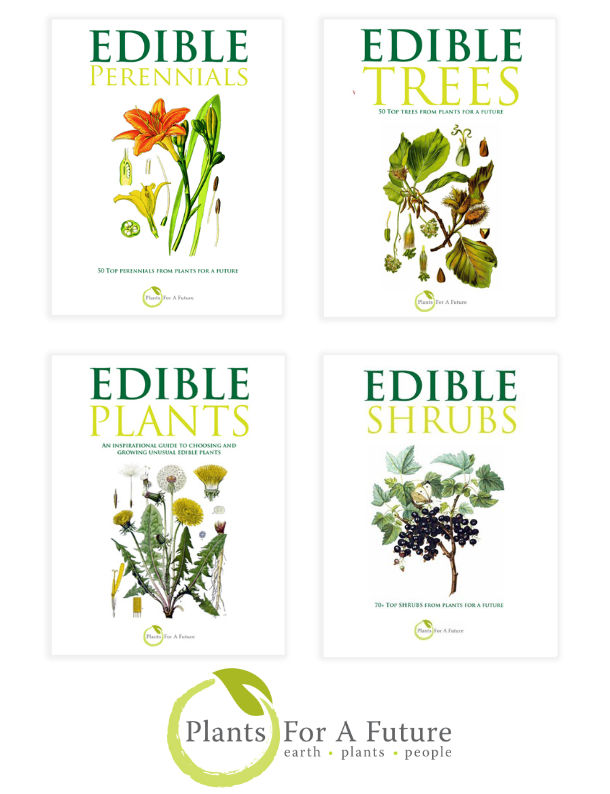Translate this page:
Summary
Citron (C. medica) is one of the oldest cultivated citrus species mainly used for its aromatic rind and said to resemble a 'huge, rough lemon'. It is used in Asian and Mediterranean cuisine, traditional medicines, perfume, and religious rituals and offerings. Citrus trees can be grown in an arid climate but may require extra care and maintenance. In general, citrus trees prefer a warm and humid environment, but some varieties are better adapted to dry climates than others. When growing citrus in an arid climate, providing plenty of water is essential, particularly during the hot and dry summer.
Physical Characteristics

 Citrus medica is an evergreen Shrub growing to 4 m (13ft) by 3 m (9ft) at a medium rate.
Citrus medica is an evergreen Shrub growing to 4 m (13ft) by 3 m (9ft) at a medium rate.
See above for USDA hardiness. It is hardy to UK zone 10 and is frost tender. The flowers are pollinated by Insects, Bees. The plant is self-fertile.
It is noted for attracting wildlife.
Suitable for: light (sandy), medium (loamy) and heavy (clay) soils and prefers well-drained soil. Suitable pH: mildly acid and neutral soils. It cannot grow in the shade. It prefers dry or moist soil.
UK Hardiness Map
US Hardiness Map
Synonyms
C. × aurantium var. medica (L.) Wight & Arn [2-5].
Plant Habitats
Edible Uses
The fruits are made into marmalade, eaten in salads or are used in liqueurs[317 ]. The thick rind of the fruit can be sliced and added to salads or candied and used as a flavouring in cakes, puddings, confectionery, etc[301 ]. It is a commercial source of candied peel, used in cakes, etc[46 ]. The thick peel is candied after being cleaned by seawater fermentation [317 ]. The fruit of some improved forms can be used to extract the juice for making beverages and desserts[301 ]. The lemon-shaped fruit can be 10 - 20cm long[418 ]. It is used in Asian and Mediterranean cuisine, traditional medicines, perfume, and religious rituals and offerings. Citrus fruits are generally harvested in late autumn to early spring, depending on the specific variety and local climate.
References More on Edible Uses
Medicinal Uses
Plants For A Future can not take any responsibility for any adverse effects from the use of plants. Always seek advice from a professional before using a plant medicinally.
Citron's fresh shoots, leaves, flowers, fruits, and seeds have all been used in several traditional medicinal preparations for treating asthma, arthritis, headache, stomachache, intestinal parasites, and certain psychological disturbances (insanity, possession by evil spirits). Decoctions of the roots are reportedly used to treat respiratory problems and backache in China[303 ]. The fruits treat malaria, coughs, and colds[348 ]. The stem is used in febrifuge pills[348 ]. Contemporary research has demonstrated that various parts of the plant exhibit anti-catarrhal, capillary protector, anti-hypertensive, diuretic, antibacterial, antifungal, anthelmintic, antimicrobial, analgesic, strong antioxidant, anticancerous, antidiabetic, estrogenic, antiulcer, cardioprotective, and antihyperglycemic properties. The nanoemulsion of essential oil from Citrus medica var. sarcodactylis has confirmed antioxidant, antibacterial and antibiofilm activity. The properties of specific cultivars have been recognised for their relevance in treating cancer, diabetes and Alzheimer's disease [1-8].
References More on Medicinal Uses
The Bookshop: Edible Plant Books
Our Latest books on Perennial Plants For Food Forests and Permaculture Gardens in paperback or digital formats.

Edible Tropical Plants
Food Forest Plants for Hotter Conditions: 250+ Plants For Tropical Food Forests & Permaculture Gardens.
More

Edible Temperate Plants
Plants for Your Food Forest: 500 Plants for Temperate Food Forests & Permaculture Gardens.
More

More Books
PFAF have eight books available in paperback and digital formats. Browse the shop for more information.
Shop Now
Other Uses
Citron fruit has been used since Roman times as a perfume and moth repellent and to flavour foods[303]. Citron juice is utilised in an eco-friendly method to synthesise copper nanoparticles. The fruit has long played an important role in Jewish ritual during the autumn harvest festival of Sukkot. In East Asia, the fruit is prized for its fragrance, and the essential oil was formerly used in perfumery. The ripe fruit is often used to air a room, dried fruits are placed with stored clothes as an insect repellent, and the juice is used to wash linens. In India, branches of the tree are used as walking sticks [1-8]. Nectary - Flowers rich in nectar and pollen: Citrus flowers are rich in nectar and pollen, making them highly attractive to pollinators like bees. Wildlife - Food (Fruit, Seeds, Leaf litter, Shelter, Nesting, Roosting): Fruits are a food source for various wildlife, including birds and mammals. The dense foliage of citrus trees can also provide shelter for nesting and roosting birds. Invertebrate Shelter (Overwintering sites, Leaf litter, Groundcover): The dense leaf litter under citrus trees can offer overwintering sites for invertebrates, and beneficial insects can use the rough bark of mature trees. Pest Confuser (Smell): The strong citrus scent from the leaves and fruit can act as a natural pest deterrent, helping to confuse or repel certain insects. 1. Nectary - Flowers rich in nectar and pollen:
Yes – Citrus flowers are rich in nectar and pollen, making them highly attractive to pollinators like bees.
2. Wildlife - Food (Fruit, Seeds, Leaf litter, Shelter, Nesting, Roosting):
Yes – The fruits are a food source for various wildlife, including birds and mammals. The dense foliage of citrus trees can also provide shelter for nesting and roosting birds.
3. Invertebrate Shelter (Overwintering sites, Leaf litter, Groundcover):
Yes – The dense leaf litter under citrus trees can offer overwintering sites for invertebrates, and the rough bark of mature trees can be used by beneficial insects.
4. Pest Confuser (Smell):
Yes – The strong citrus scent from the leaves and fruit can act as a natural pest deterrent, helping to confuse or repel certain insects.
Special Uses
References More on Other Uses
Cultivation details
Three main climates are suitable for commercial citrus production - tropical climates, subtropical with winter rain, such as in the Mediterranean and semitropical with summer rainfall, as found in Florida and southern Brazil[200 ]. Prefers a deep, well-drained but moisture-retentive loamy soil in full sun[200 ]. Prefers a pH of 6.5 - 7, tolerating 5.5 - 8[200, 418 ]. Prefers a position sheltered from strong winds[418 ]. In the tropics, citron grows very well at elevations below 1,300 metres[303 ]. The optimal temperatures for cultivation range between 15 - 27°c, with the coldest month having an average minimum of at least 15°c[200 ]. Growth generally ceases below 13°c and above 35°c[200 ]. Fruits are killed if the temperature falls to -2°c, whilst the leaves are killed at -9°c[418 ]. Irrigation will be necessary if there are more than three months of dry periods [200 ]. Citron is very sensitive to frost, intense heat, and drought; it is the tenderest of all Citrus species[303 ]. The tree has a short life cycle compared with other citrus species. It starts producing when 2 - 3 years old, reaches a maximum in 8 - 15 years and has an economical life of 25 - 30 years[303, 418 ]. Mature trees produce about 40 kg of fruit per year, but yields of up to 100 kg per year per tree have been obtained[303 ]. Citron cultivars are divided into two groups:- Acid cultivars. These have pinkish floral buds and shoots, acid pulp, a dark inner seed coat, and a chalazal spot[303 ]. Non-acid cultivars. These are without pinkish floral buds and shoots, with non-acid pulp, a colourless inner seed coat and a pale-yellow chalazal spot; in China, Japan, Indo-China and India, Citrus medica L. Var. Sarcodactylis (Noot.) Swingle is widely cultivated. It is the fingered citron or Buddha's Hand Citron, whose fruit is split into several finger-like sections without or with very scanty pulp[303 ]. It is highly esteemed for its fragrance and beauty and is used in perfume rooms and clothing[303 ]. Grown as a dwarf plant, it is also a valued ornament throughout the Far East[303 ]. The native range of this species is W. Central Himalaya to Myanmar. It is a shrub or tree and grows primarily in the subtropical biome. It is used as animal food, poison, and medicine and has environmental and social uses for food [2-5]. Citron is a straggly evergreen shrub or small tree, ranging in height from 3 to 5 m, with fruit borne on thorny branches. Compared to other Citrus species with a life expectancy of 15–18 years, a short-lived plant is very sensitive to frost, intense heat and drought; citron is considered the tenderest of all Citrus species. Citron flowers are borne in clusters of 5–20 blooms throughout the year. The fruit is fragrant and typically oblong but demonstrates considerable phenotypic plasticity, with various shapes and smooth or rough fruits sometimes occurring on the same branch (Morton 1987). The fruit ripens from green to yellow or even orange [1-8]. Soil Texture: Prefers light (sandy) or medium soils. It can tolerate some heavier soils as long as they are well-drained. Soil Moisture: Requires moist soil but not waterlogged conditions. Irrigation is necessary during dry periods. Drainage: Needs well-drained soil to prevent root rot and fungal issues. Soil pH: Grows best in neutral to slightly acidic soils (pH 6.0–7.5). It can tolerate slightly alkaline conditions but thrives in mildly acidic environments. Saline Tolerance: Moderately sensitive to saline soils and irrigation water with high salt content. Tolerance of Poor Soil: Prefers fertile, well-amended soils. It does not thrive in poor soils unless amended with organic matter. Light Requirements: Requires full sun for optimal growth and fruit production. It can tolerate very light shade but may result in reduced fruit yield. Height: Typically grows to about 2.5–5 meters (8–16 feet) tall, though it can be pruned to a smaller size for cultivation. Pollination: Pollinated by insects, particularly bees. It is self-fertile and does not require cross-pollination. Temperature: Prefers warm climates and is sensitive to frost. Ideal for USDA zones 9–11. Protect from cold winds and frost in cooler regions. Watering: Regular watering is required during dry spells, but overwatering should be avoided. Nutrient Needs: Benefits from regular fertilisation with citrus-specific fertilisers containing nitrogen, phosphorus, potassium, and micronutrients like magnesium and iron. Flowering and Fruiting: Produces fragrant white flowers followed by large, bumpy yellow fruits. Citron fruits are prized for their thick rind, often candied or used for flavouring. Pests and Diseases: Susceptible to common citrus pests such as aphids, scale insects, and citrus leaf miners. Diseases include root rot, citrus canker, and greening disease. Pruning: Regular pruning helps maintain shape, remove deadwood, and encourage air circulation to prevent fungal diseases. It has been introduced into Alabama, Algeria, Andaman Is., Benin, Borneo, Canary Is., China South-Central, China Southeast, Comoros, Cuba, Dominican Republic, Ecuador, Fiji, Florida, Haiti, India, Jamaica, Laos, Leeward Is., Madeira, Mauritania, Mexico Central, Mexico Southeast, Morocco, Nicobar Is., Oman, Peru, Puerto Rico, Society Is., Sri Lanka, Tibet, Trinidad-Tobago, Tunisia, and Vietnam. Citrus trees are generally medium-growing, taking about 3 to 5 years to start producing fruit after planting, depending on the species and growing conditions. They can reach a height of 10 to 30 feet (3 to 9 meters), with some dwarf varieties available for smaller spaces. Most Citrus species are self-fertile, meaning they can produce fruit without needing another plant for cross-pollination, though cross-pollination can improve fruit sets in some varieties. Citrus fruits are generally harvested in late autumn to early spring, depending on the specific variety and local climate.
Citrus trees usually flower in the spring. Some species may have a second flowering period in late summer.
References Carbon Farming Information and Carbon Sequestration Information
Temperature Converter
Type a value in the Celsius field to convert the value to Fahrenheit:
Fahrenheit:
The PFAF Bookshop
Plants For A Future have a number of books available in paperback and digital form. Book titles include Edible Plants, Edible Perennials, Edible Trees,Edible Shrubs, Woodland Gardening, and Temperate Food Forest Plants. Our new book is Food Forest Plants For Hotter Conditions (Tropical and Sub-Tropical).
Shop Now
Plant Propagation
The seed is best sown in containers as soon as it is ripe after thoroughly rinsing it[164, 200 ]. Sow stored seed in containers as soon as possible]. Germination usually takes place within 2 - 3 weeks at 13°c. Seedlings are liable to damp off, so they must be watered with care and kept well-ventilated. The seed is usually polyembryonic; two or more seedlings arise from each seed, and they are genetically identical to the parent, but they do not usually carry any virus that might be present in the parent plant[200 ]. When large enough to handle, prick the seedlings into individual pots and grow them until they are 10cm tall before planting them into their permanent positions. Cuttings of half-ripe wood in a frame. This species grows easily from cuttings[200 ]. Citron is usually propagated by leafy cuttings from 2-4-year-old branches[303 ]. Layering in October. Most Citrus species are self-fertile, meaning they can produce fruit without needing another plant for cross-pollination, though cross-pollination can improve fruit set in some varieties.
Other Names
If available other names are mentioned here
Cedrate
Native Range
Native to: Assam, Bangladesh, East Himalaya, Myanmar, Nepal, West Himalaya.
Weed Potential
Right plant wrong place. We are currently updating this section.
Please note that a plant may be invasive in one area but may not in your area so it's worth checking.
None Known
Conservation Status
IUCN Red List of Threatened Plants Status : Least Concern

| Related Plants
|
| Latin Name | Common Name | Habit | Height | Hardiness | Growth | Soil | Shade | Moisture | Edible | Medicinal | Other |
| Citrus aurantiifolia | Lime, Key Lime, Mexican Lime, Mexican Thornless Key Lime | Tree | 6.0 |
10-12
| M | LMH | N | M | 4 | 2 | 3 |
| Citrus aurantium | Bitter Orange, Sour orange, Bergamot orange | Tree | 9.0 |
8-11
| M | MH | N | M | 3 | 3 | 4 |
| Citrus hystrix | Kaffir Lime | Shrub | 6.0 |
9-12
| M | LMH | N | M | 3 | 2 | 3 |
| Citrus ichangensis | Ichang Papeda | Shrub | 4.5 |
7-10
| | LMH | N | M | 2 | 2 | |
| Citrus latifolia | Citrus Tahitian Lime | Tree | 5.0 |
9-11
| M | LMH | S | M | 4 | 2 | 2 |
| Citrus limon | Lemon | Shrub | 3.0 |
8-11
| M | MH | N | DM | 4 | 5 | 5 |
| Citrus reticulata | Mandarin, Tangerine, Unshu orange, Satsuma Orange,Temple Orange, Tangerine | Tree | 4.5 |
9-11
| M | MH | N | M | 3 | 3 | 2 |
| Citrus sinensis | Sweet Orange | Tree | 9.0 |
9-11
| M | MH | N | M | 4 | 3 | 3 |
| Citrus x junos | Yuzu | Tree | 4.0 |
8-10
| M | LMH | SN | M | 3 | 1 | 3 |
| Citrus x meyeri | Lemon | Shrub | 3.0 |
8-11
| M | MH | N | M | 3 | 5 | 5 |
| Citrus x paradisi | Grapefruit, Pomelo, Pamplemousse | Tree | 7.0 |
9-11
| M | LMH | N | DM | 4 | 1 | 2 |
|
Growth: S = slow M = medium F = fast. Soil: L = light (sandy) M = medium H = heavy (clay). pH: A = acid N = neutral B = basic (alkaline). Shade: F = full shade S = semi-shade N = no shade. Moisture: D = dry M = Moist We = wet Wa = water.
Now available:
Food Forest Plants for Mediterranean Conditions
350+ Perennial Plants For Mediterranean and Drier Food Forests and Permaculture Gardens.
[Paperback and eBook]
This is the third in Plants For A Future's series of plant guides for food forests tailored to
specific climate zones. Following volumes on temperate and tropical ecosystems, this book focuses
on species suited to Mediterranean conditions—regions with hot, dry summers and cool, wet winters,
often facing the added challenge of climate change.
Read More
Expert comment
Author
L.
Botanical References
Links / References
For a list of references used on this page please go here
A special thanks to Ken Fern for some of the information used on this page.
Readers comment
| Add a comment |
|
If you have important information about this plant that may help other users please add a comment or link below. Only comments or links that are felt to be directly relevant to a plant will be included. If you think a comment/link or information contained on this page is inaccurate or misleading we would welcome your feedback at [email protected]. If you have questions about a plant please use the Forum on this website as we do not have the resources to answer questions ourselves.
* Please note: the comments by website users are not necessarily those held by PFAF and may give misleading or inaccurate information.
To leave a comment please Register or login here All comments need to be approved so will not appear immediately.
|
|